
Well, Flight Lieutenant Narwhal, this is the big day.
Are we absolutely sure ?
The orders are quite clear. We received a message stating that the Commies have been caught red-handed fluoridating our water.
What does fluoridating even mean ?
No one really knows, but according to the message, they also fluoridated our ice-cream, Lieutenant ! Our children’s ice-cream !
Oh my ! Confirm reception ! Navigator, set a course for Moscow !
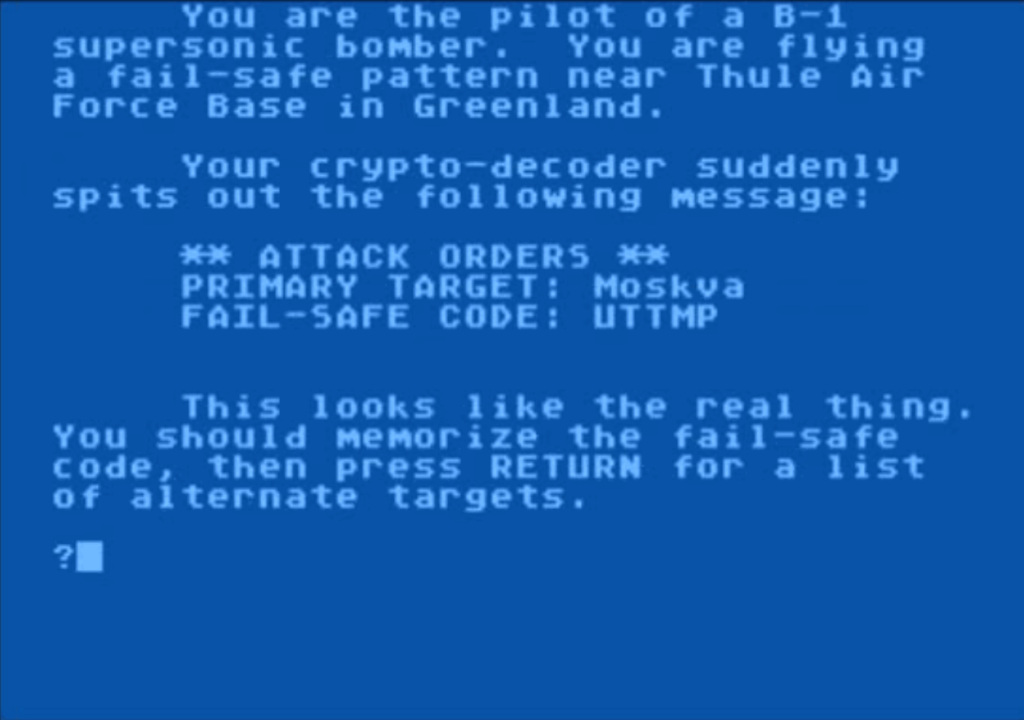
As I receive the attack order, I am allowed to review our intel one last time. It includes a list of secondary targets :

A second list included the position of enemy air defense :
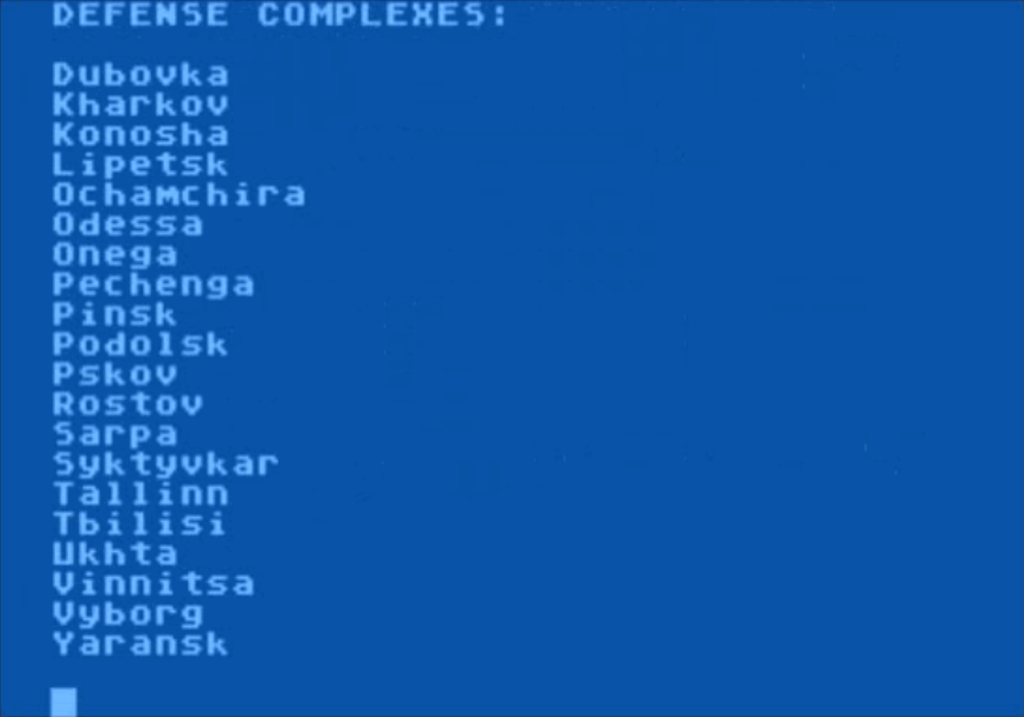
Back in my cockpit, I am given quite a few options :
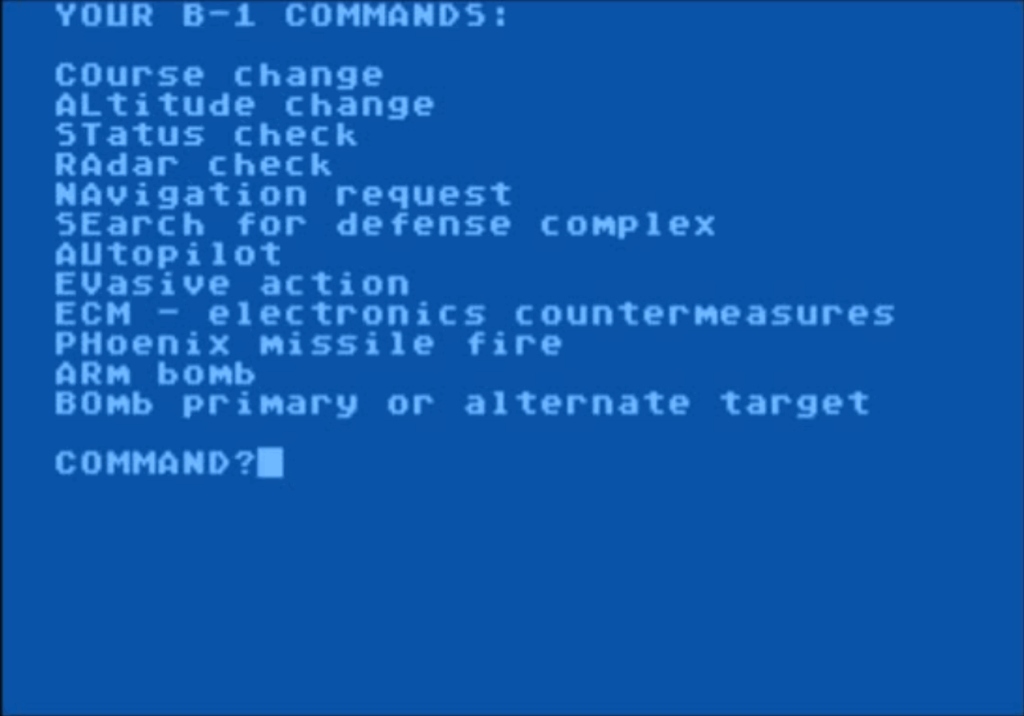
Well, let’s head to Moscow then :

As I cross over Soviet space, enemy interceptors are sent after my planes.
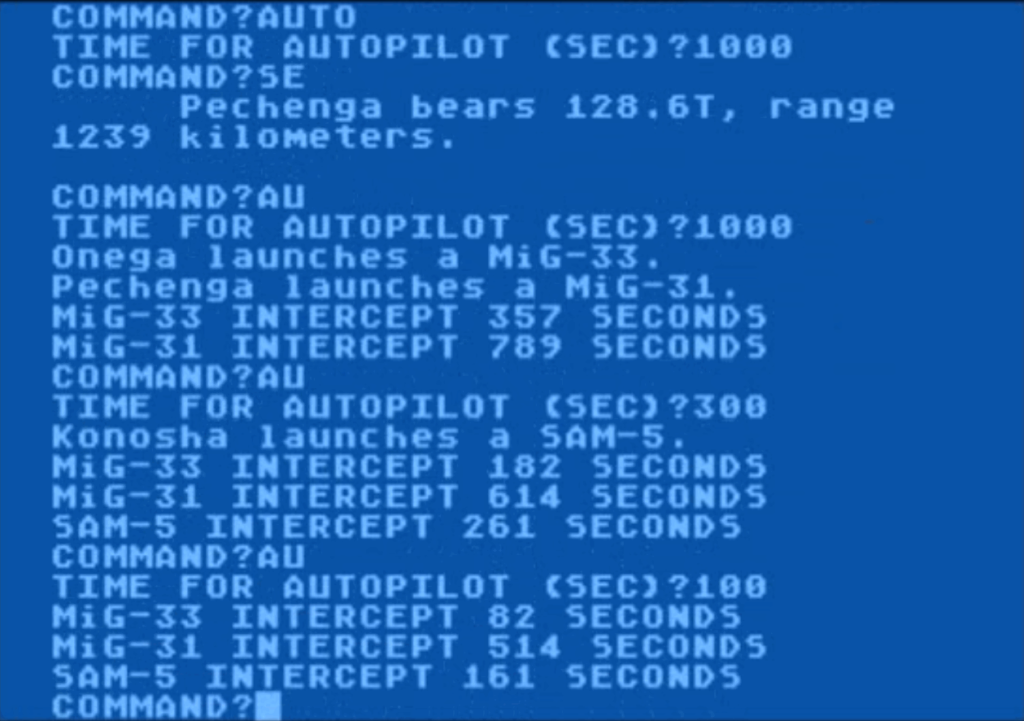
Well, I am not worried. I wait for the MiG-33 to get close and…
… I drop Electronic Measures [ECM]. The MiG-33 loses target lock and abandons pursuit immediately.

I am now closing the the air defense base of Vyborg, and I have a surprise for them…
… air-to-air Phoenix missiles, which in this game also have SEAD capacity and instantly destroy the enemy bases.
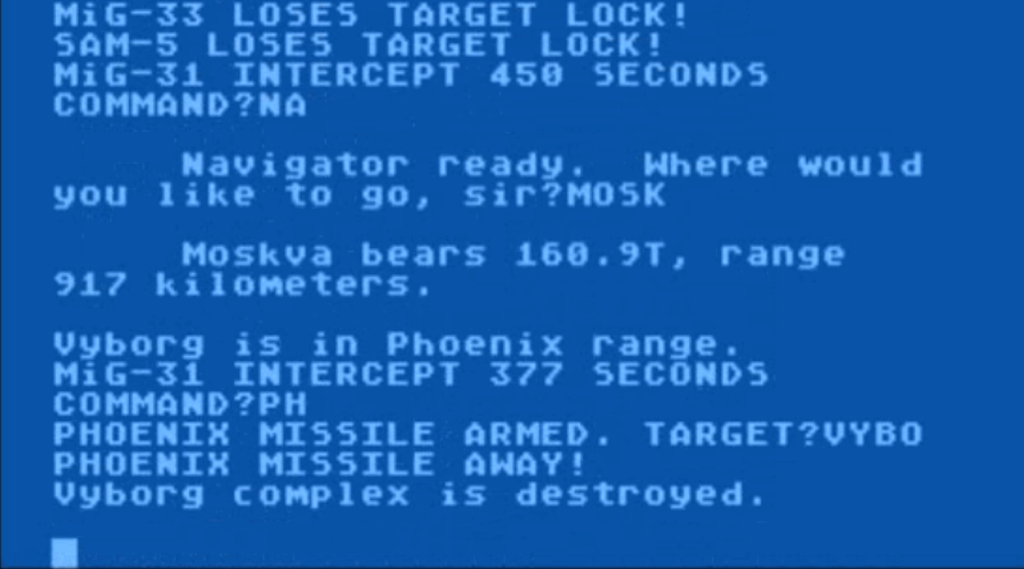
This is looking good, and we are above Leningrad. Enemy air defense sends a new wave of interceptors and missiles :
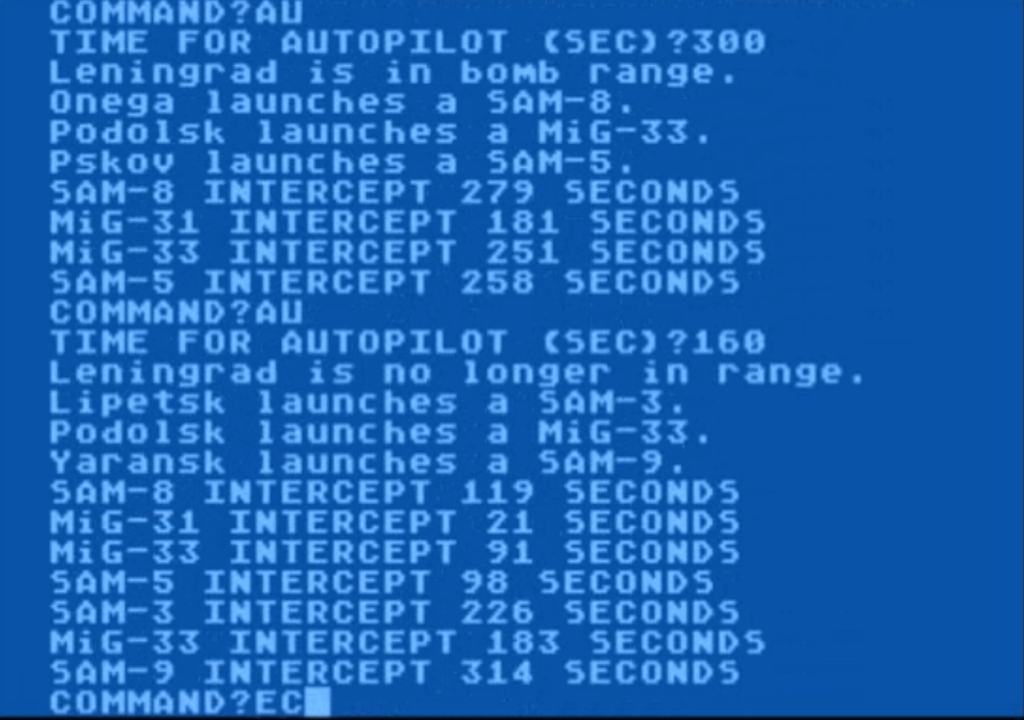
Nothing that more ECM cannot solve though :

And we arrive close to Moscow ! I hope you remember the code :

The bomb is armed, now I just have to drop it :

And voilà. Another sprinkle of ECM, and I can head back to the Thule Air Force Base :


The Soviets are now trying to intercept my bomber as it evacuates the area :
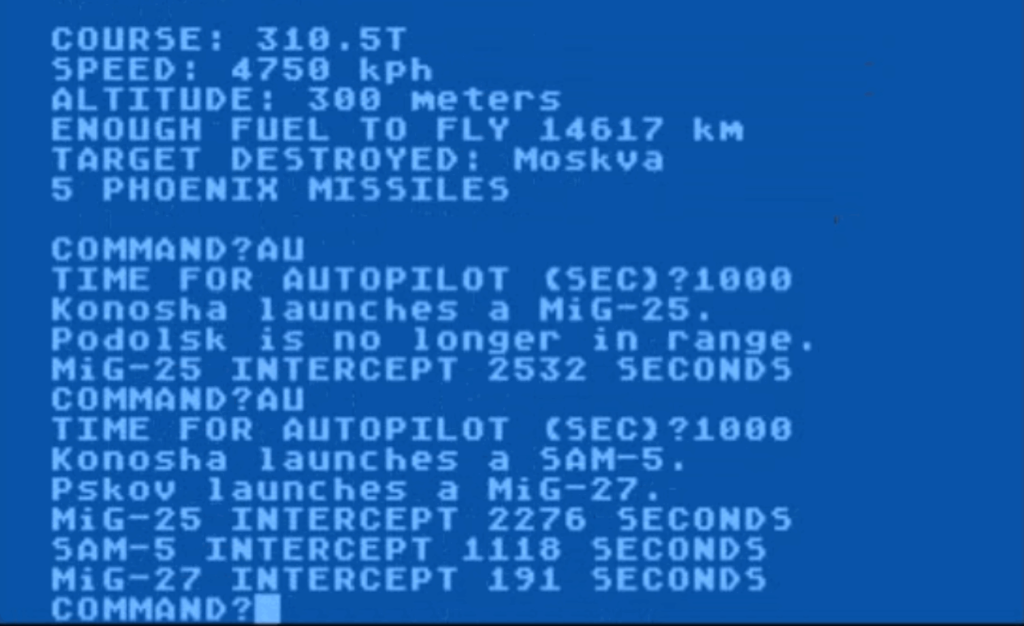
Well, I still have some ECM – actually what do you know it is infinite (but loses efficiency at each use), and consequently :
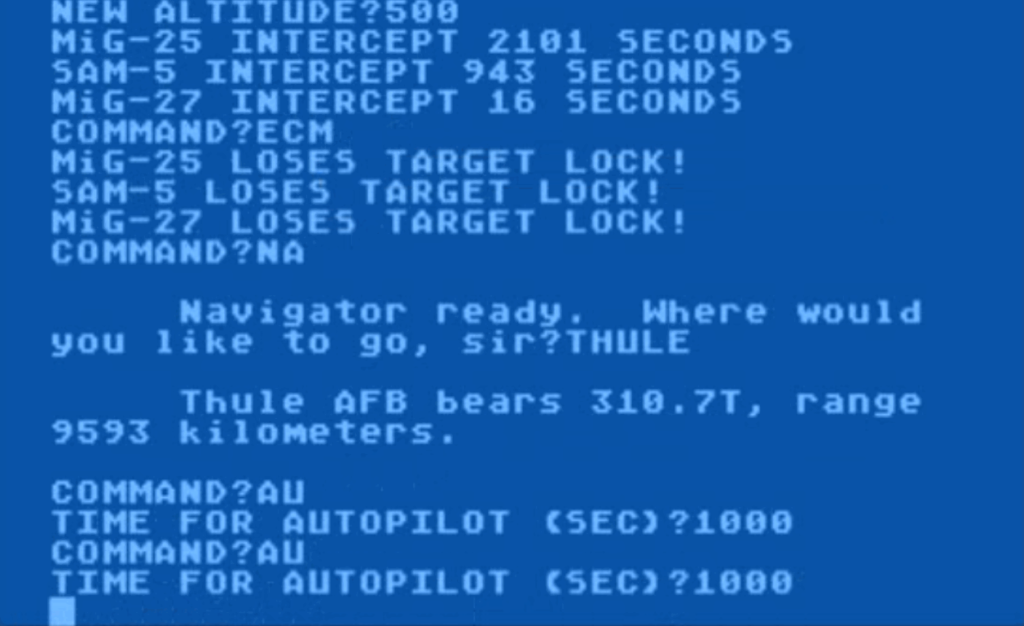
And that will be all for the Soviet air defense, let’s go home.

The whole campaign has taken 4 minutes of game time, though the emulator reduced the loading time between events. It also had been a bit easier and shorter than usual – a back and forth to Sverdlovsk can take up to 10 minutes though it is not in any way more interesting.
Ratings & Review
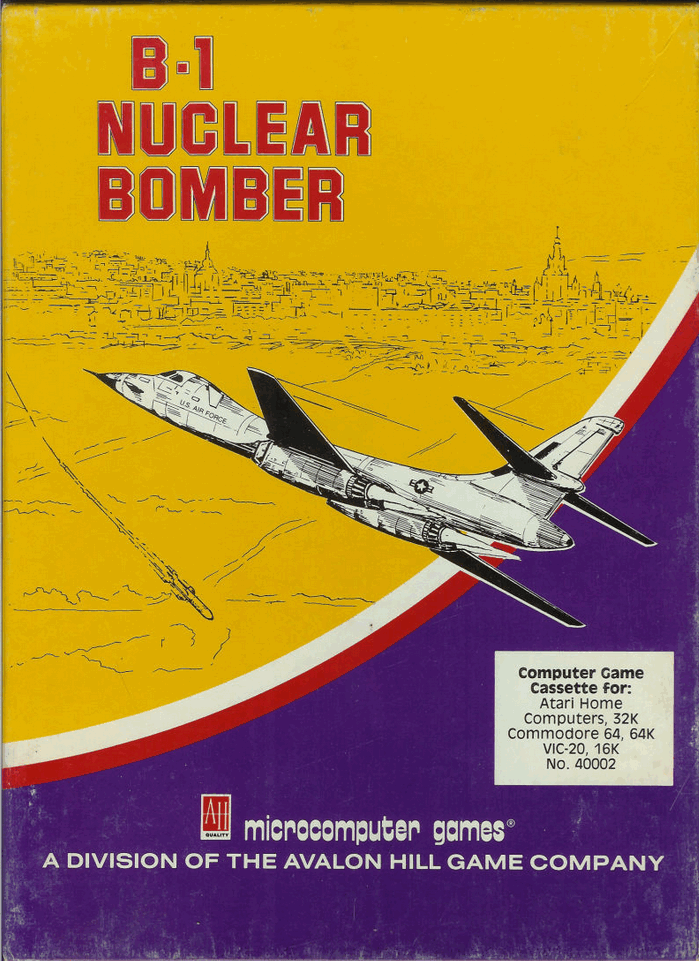
B-1 Nuclear Bomber by Avalon Hill, USA
First release : Summer 1980 on Apple II, Commodore PET, TRS-80
Tested on : Atari
Total Hours Tested : 2
Average duration of a battle : 5-10 minutes
Difficulty: Trivial (0/5)
Would recommend to a modern player : No
Would recommend to a designer : No
Final Rating: 7/100
B-1 Nuclear Bomber is another of the Avalon Hill summer 1980 releases, and in my opinion the worst one. I am not too sure it qualifies as a wargame as it lacks tactical elements, but it is maybe the best example of why in the early 80s wargamers would turn toward SSI rather than Avalon Hill for their games – so I feel like I had to cover it, even if out of my usual Monday-Thursday schedule.
A. Settings & Aesthetics
The theme could have been original and engaging, but the game is just too generic to make good use of it. The hostile planes are MiG + a random two-digit odd number between 21 and 33, the hostile missiles are SAM + a random one-digit number, both planes and missiles behave the same in that if you ECM them, evade them or are hit by them they just disappear.
Score : 1/20
B. UI , Clarity of rules and outcomes
All the commands go through simple 2 letter codes on the keyboard, but even with a system as simple the game fails on a few accounts. Typically, the “plane management” orders automatically skip time whereas the defensive orders are almost instant and as such can be spammed. The most frustrating is the [ST]atus instruction, which takes 30 in-game seconds for something that should have been displayed at all time. You sometimes find yourself in a situation where you want to know what your altitude is (low-altitude evasive action can be dangerous), but since it takes 30 seconds to check altitude in game and you have to do such maneuvers when the hostiles are less than 30 seconds away…
In addition, at least on Atari emulator, the game crashes if you don’t type a number when the game expects one (for instance on a prompt for new course / altitude).
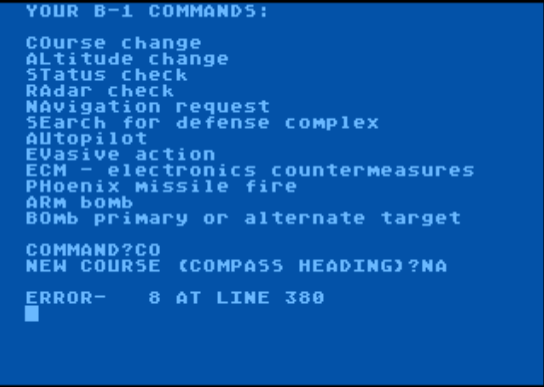
At least the rules and outcomes are fairly clear, due to them being so simple.
Score : 2/20
C. Systems
There are very few levers for the players :
- According to the manual, a lower altitude means less risk of being engaged by the air defense, but can pose a risk as EVasive action can change your altitude somewhat. Of course, evasive actions are rarely needed, so a low-but-not-too-low altitude (typically 500) is best,
- There is a choice to be made between doing some detour to destroy air defense or bee-lining to the target ; I found beeline to be always superior, but your experience may vary,
- In case of enemy attacks, there are exactly three options :
- ECM are infinite but lose potency over time,
- Evasive actions are also infinite, do not lose potency but only work at close range and randomize your altitude and direction, which is quickly corrected,
- Your six Phoenix missiles supposedly can also shoot at planes, but I never hit one at that and prefer evasive actions in all cases.
That’s pretty much all for the game options. In reality, if you use ECM at the last moment every time (affecting as many hostiles at the same time as possible), you should be able to come in & out without ever being hit. Even if you are hit, you will just lose maximum fuel, so provided your target is not Yerevan you should be fine.
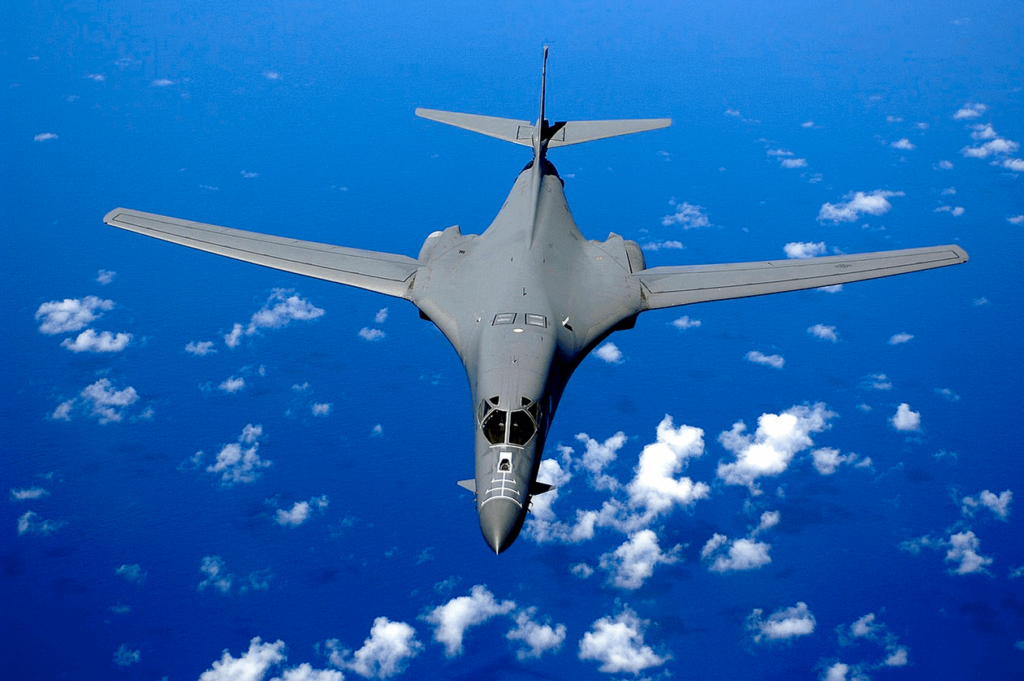
Score : 1/20
D. Scenario design & Balancing
The game randomizes your target each run, but I only ever had Leningrad, Moscow and Sverdlovsk, the latter once. Distance to fly through impacts difficulty organically (Leningrad is so close from the starting location that the difficulty is trivial, whereas my ECM were mostly inefficient by the time I flew back from Sverdlovsk – I still made it home relying on Evasive Actions) but it will remain very easy in all cases.

Score : 2/20
E. “Fun” and Replayability
No.
Score : 1/20
F. Final rating
7/100. I played it so you do not have to.
Contemporary reviews
Like the other games from the Avalon Hill summer 1980 release, there were quite few reviews for B-1 Nuclear Bomber, but initially they were not as bad as I expected. Computer Gaming World in its very first issue (November 1980) called it fun though unrealistic and added a bonus map to find the best routes. I am amused that among its complains for lack of realism it states that the bomb should have different range at different altitudes – given all the other issues this really feels like a detail. Creative Computer in June 1981 calls it the best of the five Avalon Hill games, though the reviewer did not call any of those games good.
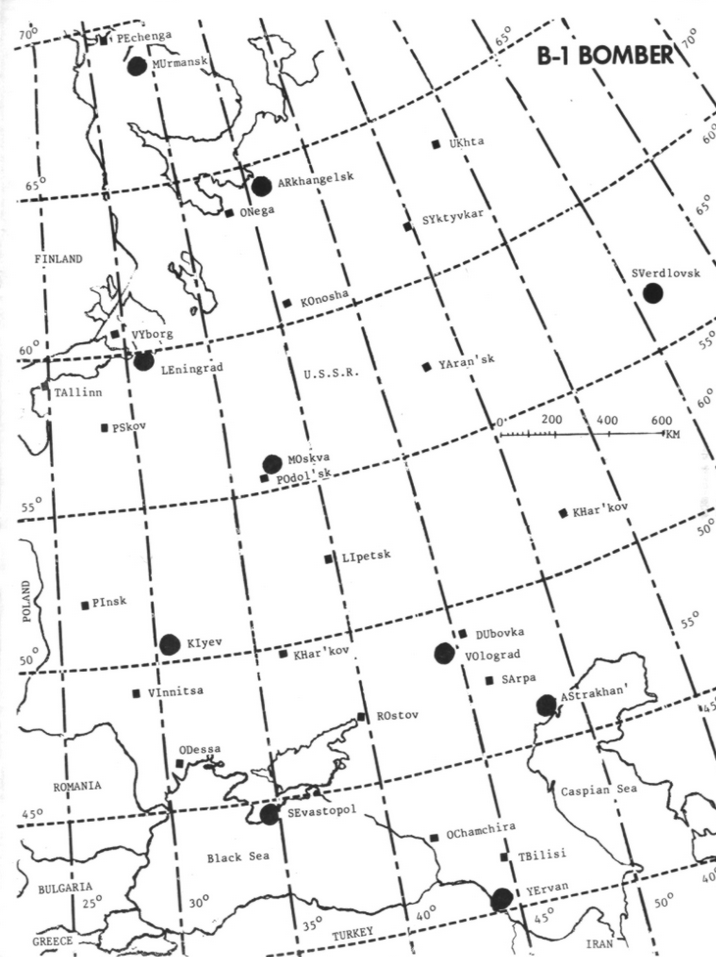
Those surprisingly mixed reviews would not last. New versions released in 1983, some of which like the one for Commodore 64 added some bells and whistles like a static cockpit, were the occasion for a new round of reviews, way more negative.
In its 1993 wargame retrospective, Computer Gaming World‘s scathing review would put the last nail in the coffins of B-1 Nuclear Bomber reputation : “its play mechanics are embarrassing in the contemporary market; in fact its play mechanics were embarrassing when it was initially released.”